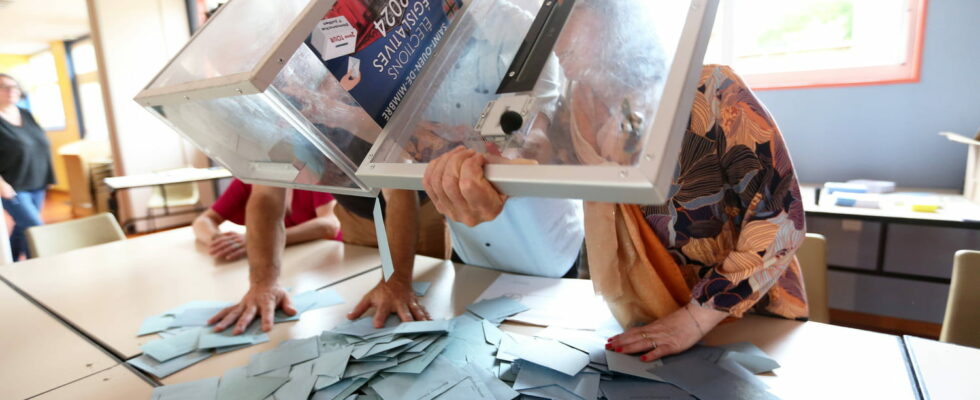The results of the first round of the 2024 legislative elections give rise to a record number of three-way races. We explain what they are and what they imply.
►Find your city to view the legislative results:
The many withdrawals made official in the wake of the first round of the legislative elections have logically reduced the number of three-way races contested this Sunday, July 7, during the second round of these 2024 legislative elections. But there are still some, and even many. Of the 577 constituencies in France, 76 deputies were elected in the first round. There are therefore 501 seats of deputies to be filled. Among these 501 elections to be held on Sunday, 89 “three-way” races will thus be organized according to the lists of candidates sent to the Ministry of the Interior. That is still more than 17%.
By “triangular”, we therefore mean a second round that brings together three candidates, instead of two most often. The rules of the French legislative elections provide for cases where three candidates can qualify for the second round, under certain conditions. These are called triangulars. Quadrangulars, although even rarer, are also possible. To qualify for the second round, a candidate must collect more than 50% of the votes cast as well as a number of votes at least equal to 25% of registered voters, the latter is directly elected in his constituency. But if no candidate meets these two criteria, a second round is organized. All candidates who have collected at least 12.5% of the votes of registered voters in their constituency are then qualified. In the event of a high turnout, as was the case on Sunday, June 30 during the first round, three or four candidates may find themselves in this situation.
In which constituencies are there three-way races in the 2024 legislative elections?
Following the results of the first round of the legislative elections, 306 constituencies out of 577 were in a three-way situation. A record number that can be explained in particular by the high turnout for a legislative election, but also by the low number of candidates compared to usual. In comparison, two years ago, there were only seven three-way races. In 244 cases, the three-way races were between the National Rally, the New Popular Front and Together for the Republic. In 46 cases, they were between the RN, the NFP and LR.
But with the many withdrawals recorded, mainly to face the RN, there are ultimately only 89 three-way races organized this Sunday. These three-way races mostly include constituencies where the RN only came in third place in the first round. The opponents therefore judge that it has little chance of winning and have maintained their candidacies. The Ensemble, pour la majeur présidentielle party also maintained some candidates who came in 3rd place, judging that remaining in these specific constituencies would not favor a possible election of the RN. A bet that will be closely scrutinized and no doubt commented on Sunday evening when the results are announced…
Triangular races in highly contested constituencies and with political figures in the running
Among the constituencies with three-way races on Sunday to watch in particular, we will note the 1st constituency of the Alpes Maritimes. Eric Ciotti, at the origin of the LR-RN alliance criticized in his own camp, came out on top in the first round but will face Olivier Salerno for LFI-Nouveau Front Populaire and Graig Monetti for Horizons-Ensemble. Another three-way race that will be very closely watched on Sunday is that in the 1st constituency of Corrèze. Former President of the Republic François Hollande will face Maïté Pouget for the RN and Francis Dubois for LR.
In the 1st constituency of Isère, former minister Olivier Véran (Ensemble) is opposed to Hugo Prévost for LFI-New Popular Front and Alexandre Lacroix for LR-RN. We will also note the presence of a three-way race in Lot (1st constituency) for outgoing LR MP Aurélien Pradié opposed to Elsa Bougeard for the New Popular Front and Slavka Mihailova for the RN.
